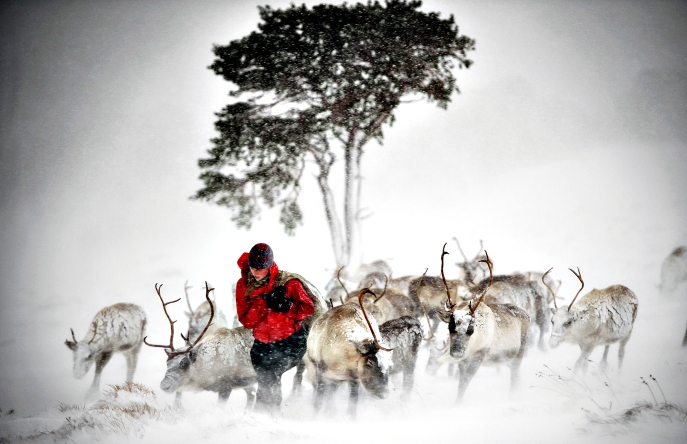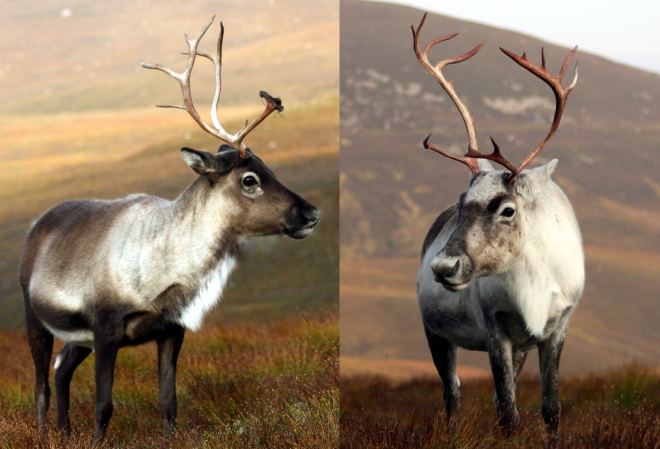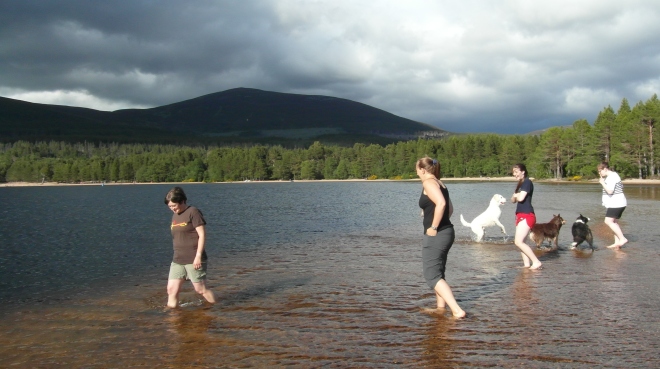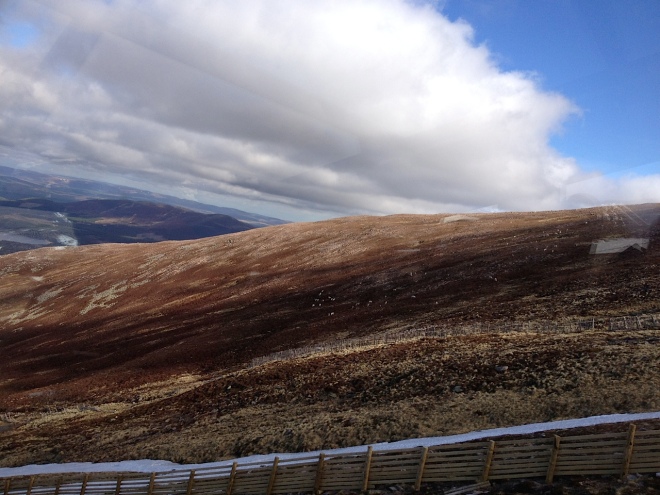‘Christmas’ for us reindeer herders, doesn’t just mean Dec 25th, but rather the entire period of November and December. After 7-8 weeks of (organised) chaos, hectic days and usually less than desirable weather, Christmas Day itself always seems a rather incidental event at the end of it all! While tour is frequently great fun, it is also extremely tiring and by the end we’re all ready to heave a huge sigh of relief and pack away everything for another 10 months. Come January, should one more person jokingly ask a herder which one Rudolph is, then so help them God…
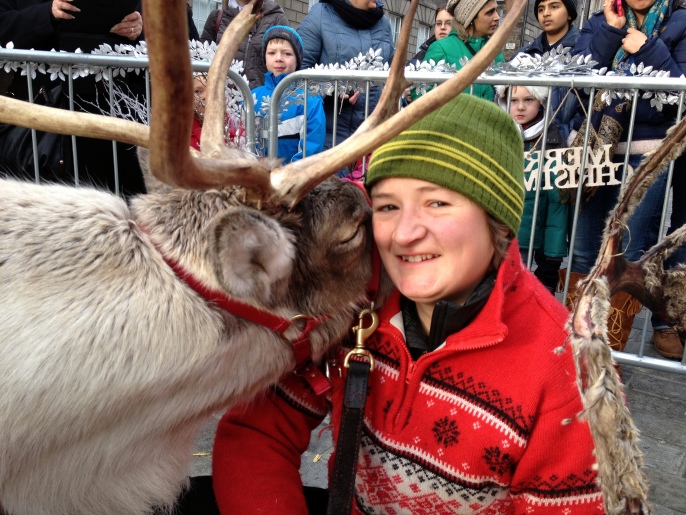
While up to eight teams of reindeer are away on the weekends in November and December, the weekdays are quieter, and most teams return home. We have around 45 big male castrate reindeer who are trained to harness, four of which will travel to each event along with two 6 to 7 month old calves, making teams of six. So even on the busiest weekends there are still reindeer at home taking their turn to ‘hold the fort’, and no single reindeer will go out to events week upon week. Many teams go out only for a night or two at the weekend, returning home straight away afterwards, while a few head away for longer but 2.5 weeks at a time is always the longest stint we ever do with the same six reindeer.
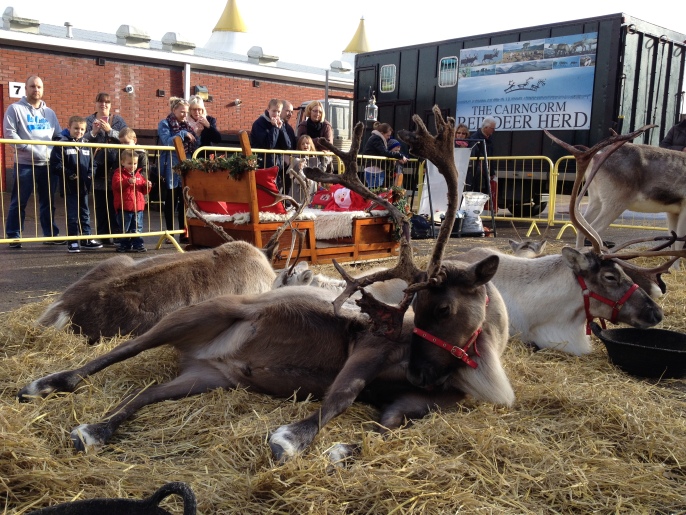
Obviously, being based in the Cairngorms means that most trips away on tour for a ‘long stint’ start with the long haul down the A9 and onward, so a network of ‘bases’ across the UK to keep our travelling time down is a necessity. Our two main big bases are in the Lake District and South Wales, but we also have three in the central and southern Scotland, plus another five or so in England. Most are farms, so the reindeer are housed in a large, airy barn or undercover yard while we herders have accommodation on site too, usually in the form of a self-catering cottage. This then enables us to travel much shorter distances to our events, and (like us!) reindeer require days off while on tour, so the bases provide safe and secure locations for them then.


Grass is far too rich for a reindeer’s diet, so while we let them get some grazing each day while exercising them, we don’t leave them on grass for too long at any one time. Our usual routine is to get up and to take the reindeer out for a stretch of the legs first thing. At some bases this involves a run on halters, but at most we can let them loose in a field and they will hurtle around ‘dancing’ (reindeer don’t buck like excited horses, but will leap in the air, spin around and bounce about!). Then it’s back to the barn for their breakfast, while we poo-pick, refill water bowls and sort the lorry ready for the next event. Then it’s breakfast time for us!

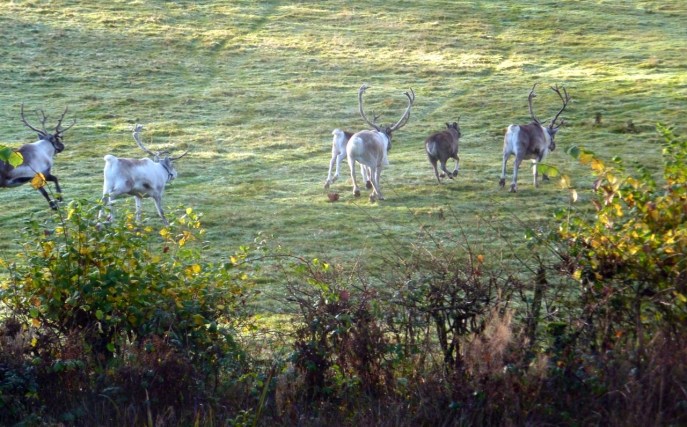



Aside from looking after the reindeer, base days can go one of two ways, depending on your team partner is. Should it be Mel or Sally (among others) then it might become what has become known as ‘boot-camp’ – an energetic day of walking or cycling. For the lazier or less fit amongst us (primarily pointing the finger at myself here), a day of pottering around local towns, drinking coffee and sight-seeing seems more appealing! We do however, have to help out Reindeer House on occasion, who will sometimes send us lists of letters to write to go into adoption packs – Christmas is a hectic time for those left behind at base.

And then there are the events. They range from shopping centres to light switch-ons, town centre parades to private functions, and are a way of raising the money needed for the reindeer to continue their free-ranging lifestyle on the Cairngorms. Reindeer are a herd animal, hence why we never take less than four out together (usually six), and as they all go out to events as calves then they are very relaxed when we take them out and about again as full-grown adults, as they’ve seen it all before. They are great fun on tour and we always return home with endless stories from each event: how each reindeer behaved when pulling the sleigh, who fell asleep into their feed bowl, who kept trying to eat the tinsel on the sleigh, and who tried to eat nick a box of Celebrations from the Queen’s head groom at Windsor (stand up and take a bow, Fergus…).

Hen







